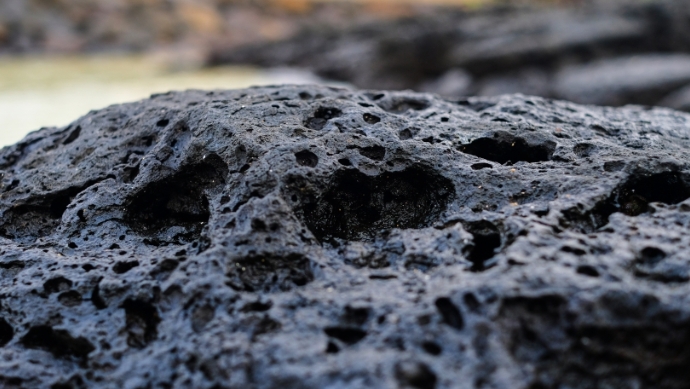Basalt is a commonly found igneous rock that is formed from the rapid cooling of lava. It is known for its dark color and fine-grained texture.
Understanding the Formation of Basalt
Basalt is formed when lava erupts from a volcano and cools relatively quickly on the Earth’s surface. This rapid cooling process prevents large mineral crystals from forming, resulting in the fine-grained texture that is characteristic of basalt.
Composition of Basalt
Basalt is primarily composed of minerals such as plagioclase, pyroxene, and olivine. These minerals give basalt its dark color and contribute to its overall composition.
Origin of the Name “Basalt”
The name “basalt” is derived from the Latin word “basaltes,” which in turn is believed to have originated from the Ancient Greek word “basanos.” This term was used to refer to a dark, fine-grained rock that was often used in testing the purity of gold.
Geological Significance of Basalt
Basalt is a common rock found in the Earth’s crust and is often associated with volcanic activity. It can be found in a variety of settings, from the ocean floor to volcanic landforms such as lava flows and volcanic cones.
Uses of Basalt
Basalt has a variety of practical uses, including as a construction material for buildings, roads, and monuments. It is also used in the production of aggregate for concrete and asphalt, as well as in the manufacturing of stone wool insulation.
In conclusion, basalt is a fascinating rock with a rich geological history. Its origins lie in the fiery depths of volcanic activity, and its unique composition and properties make it a valuable resource in various industries.

